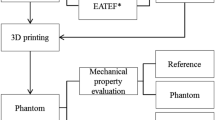Abstract
Medical surgical procedures have not changed much during the past century due to the lack of accurate low-cost workbench for testing any new improvement. The increasingly cheaper and powerful computer technologies have made computer-based surgery planning and training feasible. In our work, we have developed an accurate 3D stomach model, which aims to improve the surgical procedure that treats the infant pediatric and neonatal gastro-esophageal reflux disease (GERD). We generate the 3-D infant stomach model based on in vivo computer tomography (CT) scans of an infant. CT is a widely used clinical imaging modality that is cheap, but with low spatial resolution. To improve the model accuracy, we use the high resolution Visible Human Project (VHP) in model building. Next, we add soft muscle material properties to make the 3D model deformable. Then we use virtual reality techniques such as haptic devices to make the 3D stomach model deform upon touching force. This accurate 3D stomach model provides a workbench for testing new GERD treatment surgical procedures. It has the potential to reduce or eliminate the extensive cost associated with animal testing when improving any surgical procedure, and ultimately, to reduce the risk associated with infant GERD surgery.
Preview
Unable to display preview. Download preview PDF.
Similar content being viewed by others
References
Ackerman, M.J.: The visible human project. Proceedings of the IEEE 86, 504–511 (1998)
Tan, S.W., Wulkan, M.L.: Minimally Invasive Surgical Techniques in Re-operative Surgery for Gastroesophageal Reflux disease in Infants and Children Emory University School of Medicine, pp. 1–13 (2004)
Zhang, S., Gu, L., Huang, P., Xu, J.: Real-time simulation of deformable soft tissue based on mass-spring and medial representation. In: Liu, Y., Jiang, T.-Z., Zhang, C. (eds.) CVBIA 2005. LNCS, vol. 3765, pp. 419–426. Springer, Heidelberg (2005)
Kaul, A., Rossignac, J.: Solid-interpolating deformations: construction and animation of PIPs, Techn. Rep. RC 16387 (#72685), IBM Research Division T.J. Watson Research Center Yorktown Heights, New York (December 1990)
Author information
Authors and Affiliations
Editor information
Editors and Affiliations
Rights and permissions
Copyright information
© 2009 Springer-Verlag Berlin Heidelberg
About this paper
Cite this paper
Chaudry, Q., Raza, S.H., Lee, J., Xu, Y., Wulkan, M., Wang, M.D. (2009). Development of a High Resolution 3D Infant Stomach Model for Surgical Planning. In: Jiang, X., Petkov, N. (eds) Computer Analysis of Images and Patterns. CAIP 2009. Lecture Notes in Computer Science, vol 5702. Springer, Berlin, Heidelberg. https://doi.org/10.1007/978-3-642-03767-2_75
Download citation
DOI: https://doi.org/10.1007/978-3-642-03767-2_75
Publisher Name: Springer, Berlin, Heidelberg
Print ISBN: 978-3-642-03766-5
Online ISBN: 978-3-642-03767-2
eBook Packages: Computer ScienceComputer Science (R0)




